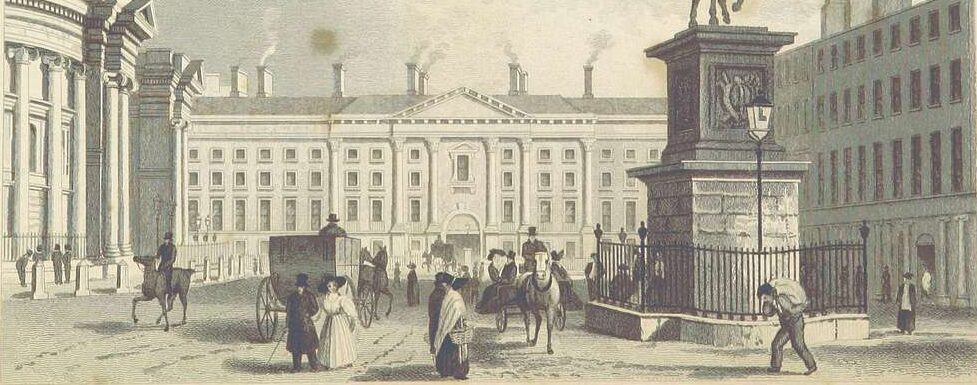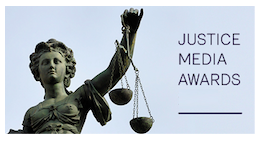The way to get people to build a ship is not to teach them carpentry, assign them tasks, and give them schedules to meet; but to inspire them to long for the infinite immensity of the sea.
…
the Irish for rights

Not only are early incarnations of Mickey Mouse no longer covered by copyright, but as of 1 January last, neither is Popeye (King Features page | Popeye.com | wikipedia), at least in the EU. According to The Times:
Popeye the Sailor copyright free 70 years after Elzie Segar’s death
“I yam what I yam,” declared Popeye. And just what that is is likely to become less clear as the copyright expires on the character who generates about £1.5 billion in annual sales.
From January 1, the iconic sailor falls into the public domain in Britain under an EU law that restricts the rights of authors to 70 years after their death. Elzie Segar, the Illinois artist who created Popeye, his love interest Olive Oyl and nemesis Bluto, died in 1938. .. The copyright expiry means that … anyone can print and sell Popeye posters, T-shirts and even create new comic strips, without the need for authorisation or to make royalty payments. …
Elzie Segar is one of a number of authors whose work came out of copyright on 1 January last. However, in a similar story, The Telegraph warns
…… the question of whether any company can now attach Popeye’s famous face to their spinach cans will have to be tested in court.
 If this had happened in Ireland, would the photos in this story (hat tip: Piste Off: Man Left Dangling With Full “Northern Exposure” at Ski Resort) be actionable having regard to Sinnott v Carlow Nationalist (discussed here, here, here, here and here), and if so, should they be?
If this had happened in Ireland, would the photos in this story (hat tip: Piste Off: Man Left Dangling With Full “Northern Exposure” at Ski Resort) be actionable having regard to Sinnott v Carlow Nationalist (discussed here, here, here, here and here), and if so, should they be?
…
 There may – controversially – be no duty to rescue at common law (see, eg, Alan Calnan (SSRN), David Hyman (pdf)), but the emergency can beget the man (Wagner v International Railway 232 NY 176 (1926) (Cardozo J)), even in New York. However, although danger may very well invite rescue (Wagner (Cardozo J) again), nevertheless, it seems that it would now be wise to decline the invitation in California. From Ratio Juris:
There may – controversially – be no duty to rescue at common law (see, eg, Alan Calnan (SSRN), David Hyman (pdf)), but the emergency can beget the man (Wagner v International Railway 232 NY 176 (1926) (Cardozo J)), even in New York. However, although danger may very well invite rescue (Wagner (Cardozo J) again), nevertheless, it seems that it would now be wise to decline the invitation in California. From Ratio Juris:
… The California Supreme Court has given fresh meaning to “no good deed goes unpunished.” It ruled last week that a woman who yanked a co-worker from a crashed car four years ago, and may have made her injuries worse, can be sued because what she did wasn’t medical care. …
The best conceptual discussions are EJ Weinrib “The Case for a Duty to Rescue” (1980) 90 Yale Law Journal 247 and the very different WM Landes and RA Posner “Salvors, Finders, Good Samaritans and other Rescuers: An economic study of Law and Altruism” (1978) Journal of Legal Studies 83 (SSRN); for Irish law on the point, see “Danger Invites Rescue. The Tort of Negligence and the Rescue Principle” (1992) 14 Dublin University Law Journal 65.…
 In the Law School in Trinity, the proportion of my students using laptops in class has increased year by year, though they have not yet reached the levels attained in US law schools, where the vast majority of students have laptops in class. Whether this is too much of a good thing, however, is now a serious matter for debate: are benefits of the technology outweighed by the capacity for distraction (taking notes vs updating facebook)? The University of Chicago School of Law has turned off wireless internet access in class, Harvard Law School has considered banning laptops in class, various individual law professors have actually done so or negotiated them away, and there is even a law review article on the issue. Now, Law School Innovation reports on an article from The Chronicle of Higher Education, headlined “Survey Gets Law-School Students’ Thoughts on Laptops, Writing, and Ethics” (sub req’d). Some extracts:
In the Law School in Trinity, the proportion of my students using laptops in class has increased year by year, though they have not yet reached the levels attained in US law schools, where the vast majority of students have laptops in class. Whether this is too much of a good thing, however, is now a serious matter for debate: are benefits of the technology outweighed by the capacity for distraction (taking notes vs updating facebook)? The University of Chicago School of Law has turned off wireless internet access in class, Harvard Law School has considered banning laptops in class, various individual law professors have actually done so or negotiated them away, and there is even a law review article on the issue. Now, Law School Innovation reports on an article from The Chronicle of Higher Education, headlined “Survey Gets Law-School Students’ Thoughts on Laptops, Writing, and Ethics” (sub req’d). Some extracts:
…Law-school professors are fed up with students using laptop computers in class to surf to Facebook, eBay, everything but LexisNexis. And some have even banned the distracting machines. But results from a new survey show that an outright ban might not be such a good idea.
 It’s an old story by now, but I missed it at the time, and I stumbled upon it today. It begins with a worthy event, the Law Society of Ireland‘s Justice Media Awards, established to give national recognition to legal journalism in various categories. To my mind, the categories are rather narrow, confined as they are in effect to full-time journalists in the traditional media, but that’s a minor quibble which I am sure will be addressed in the future by the addition of a new, more general, category (perhaps named for a significant figure associated with the Society). In any event, the 2008 awards were presented late last year, and at the event Mr Justice Adrian Hardiman of the Supreme Court made a speech which caused some controversy. For example, writing the Irish Times the following day, Carl O’Brien (one of the winners on the night) reported that Hardiman
It’s an old story by now, but I missed it at the time, and I stumbled upon it today. It begins with a worthy event, the Law Society of Ireland‘s Justice Media Awards, established to give national recognition to legal journalism in various categories. To my mind, the categories are rather narrow, confined as they are in effect to full-time journalists in the traditional media, but that’s a minor quibble which I am sure will be addressed in the future by the addition of a new, more general, category (perhaps named for a significant figure associated with the Society). In any event, the 2008 awards were presented late last year, and at the event Mr Justice Adrian Hardiman of the Supreme Court made a speech which caused some controversy. For example, writing the Irish Times the following day, Carl O’Brien (one of the winners on the night) reported that Hardiman
… has sharply criticised the media for its “inadequate and uninformative” coverage of the courts. Speaking at the Law Society annual Justice Media Awards, he accused the media of rushing to comment on judges’ rulings without properly examining or understanding them.
The Irish Times later published the full text of the speech here.…
In yesterday’s Irish Times, I noticed the following story:
ESB to pay rebates on 100,000 overcharged bills
The ESB says the payment of rebates to about 100,000 of its customers who were overcharged on estimated bills will be completed by the end of next month.
The utility is repaying a total of €3.5 million to customers after carrying out a review of its billing practices ordered by the Commission for Energy Regulation (CER) …
This is as it should be. Even if there were no contractual obligation on the ESB to regularise the position regarding estimated bills, there would be plainly be a restitutionary one. This reminded me of a story from a recent Financial Times, about pension overpayments on a large scale, which also makes for very interesting reading: …
 In Atherton v DPP [2006] 1 IR 245, [2005] IEHC 429 (21 December 2005) Peart J held that a video recording of a hedge visible from the public road – and thus of the accused causing criminal damage to the hedge – did not constitute an unconstitutional invasion of the accused’s right to privacy. On the other hand, in Sinnott v Carlow Nationalist (High Court, unreported, 30 July 2008, Budd J) (already discussed on this site: here, here, here and here), Budd J held that the publication of a photograph of the plaintiff playing Gaelic football in which his private parts were clearly visible constituted a breach of his constitutional right to privacy. It is therefore reasonably clear that – as Atherton illustrates – most matters which occur in a public place will not, for that reason, attract the protection of the constitutional right of privacy; but that – as Sinnott illustrates – some matters will.
In Atherton v DPP [2006] 1 IR 245, [2005] IEHC 429 (21 December 2005) Peart J held that a video recording of a hedge visible from the public road – and thus of the accused causing criminal damage to the hedge – did not constitute an unconstitutional invasion of the accused’s right to privacy. On the other hand, in Sinnott v Carlow Nationalist (High Court, unreported, 30 July 2008, Budd J) (already discussed on this site: here, here, here and here), Budd J held that the publication of a photograph of the plaintiff playing Gaelic football in which his private parts were clearly visible constituted a breach of his constitutional right to privacy. It is therefore reasonably clear that – as Atherton illustrates – most matters which occur in a public place will not, for that reason, attract the protection of the constitutional right of privacy; but that – as Sinnott illustrates – some matters will.
Although Sinnott may very well be exceptional, it demonstrates that, as a matter of Irish law, it is possible to assert a right of privacy in a public place. Although it may also be exceptional, the converse may also be true, that a right of privacy may be lost even in a private place.…